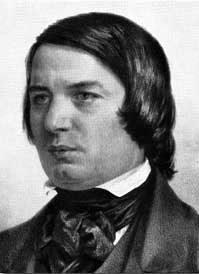Symphony No. 1 (Schumann)
Symphony No. 1 in B flat major, Op. 38 ("Spring") is the first of Robert Schumann's four symphonies. It was written early 1841. Schumann sketched the symphony in four days from 23 January to 26 January. He completed the orchestration by 20 February. The premiere took place under the direction of Felix Mendelssohn on 31 March 1841 in Leipzig. The symphony was well received. Schumann was largely known for his piano works and for songs at the time. His wife Clara Schumann encouraged him to write symphonic music. Schumann said he was inspired by his Liebesfrühling (spring of love) in the symphony's composition.

The work has four movements: Andante un poco maestoso – Allegro molto vivace (B flat major); Larghetto (E flat major; Scherzo: Molto vivace – Trio I: Molto piu vivace – Trio II (G minor); and Allegro animato e grazioso (B flat major). The orchestration is for 2 flutes, 2 oboes, 2 clarinets, 2 bassoons, 4 horns, 2 trumpets, 3 trombones, timpani, triangle and strings. Schumann expanded the use of the timpani in this piece.[1] He made some revisions in the work until the definitive edition was published in 1853.
References
change- ↑ Bowles, Timpani. pp.55–57